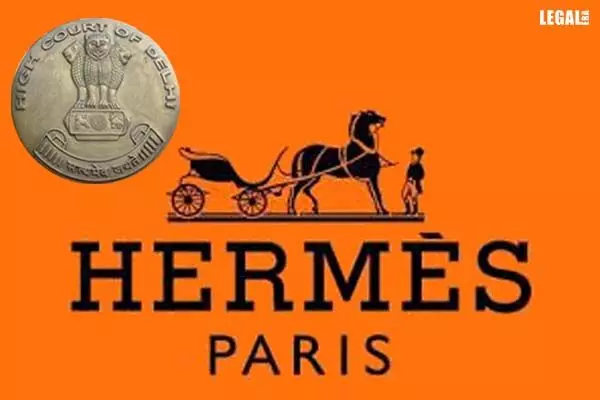- Home
- News
- Articles+
- Aerospace
- Agriculture
- Alternate Dispute Resolution
- Banking and Finance
- Bankruptcy
- Book Review
- Bribery & Corruption
- Commercial Litigation
- Competition Law
- Conference Reports
- Consumer Products
- Contract
- Corporate Governance
- Corporate Law
- Covid-19
- Cryptocurrency
- Cybersecurity
- Data Protection
- Defence
- Digital Economy
- E-commerce
- Employment Law
- Energy and Natural Resources
- Entertainment and Sports Law
- Environmental Law
- FDI
- Food and Beverage
- Health Care
- IBC Diaries
- Insurance Law
- Intellectual Property
- International Law
- Know the Law
- Labour Laws
- Litigation
- Litigation Funding
- Manufacturing
- Mergers & Acquisitions
- NFTs
- Privacy
- Private Equity
- Project Finance
- Real Estate
- Risk and Compliance
- Technology Media and Telecom
- Tributes
- Zoom In
- Take On Board
- In Focus
- Law & Policy and Regulation
- IP & Tech Era
- Viewpoint
- Arbitration & Mediation
- Tax
- Student Corner
- AI
- ESG
- Gaming
- Inclusion & Diversity
- Law Firms
- In-House
- Rankings
- E-Magazine
- Legal Era TV
- Events
- News
- Articles
- Aerospace
- Agriculture
- Alternate Dispute Resolution
- Banking and Finance
- Bankruptcy
- Book Review
- Bribery & Corruption
- Commercial Litigation
- Competition Law
- Conference Reports
- Consumer Products
- Contract
- Corporate Governance
- Corporate Law
- Covid-19
- Cryptocurrency
- Cybersecurity
- Data Protection
- Defence
- Digital Economy
- E-commerce
- Employment Law
- Energy and Natural Resources
- Entertainment and Sports Law
- Environmental Law
- FDI
- Food and Beverage
- Health Care
- IBC Diaries
- Insurance Law
- Intellectual Property
- International Law
- Know the Law
- Labour Laws
- Litigation
- Litigation Funding
- Manufacturing
- Mergers & Acquisitions
- NFTs
- Privacy
- Private Equity
- Project Finance
- Real Estate
- Risk and Compliance
- Technology Media and Telecom
- Tributes
- Zoom In
- Take On Board
- In Focus
- Law & Policy and Regulation
- IP & Tech Era
- Viewpoint
- Arbitration & Mediation
- Tax
- Student Corner
- AI
- ESG
- Gaming
- Inclusion & Diversity
- Law Firms
- In-House
- Rankings
- E-Magazine
- Legal Era TV
- Events
Delhi High Court: Declares Hermes International Stylized Mark 'H' as Well-Known Trademark

Delhi High Court: Declares Hermes International Stylized Mark 'H' as Well-Known Trademark
The Delhi High Court passed a decree, declaring the stylized mark - "H" - of Hermes International, a French luxury brand, as a well-known trademark after observing that it satisfied the criteria enumerated in section 11(6) of the Trade Marks Act, read with Section 11(7) so as to justify declaration of the 'H' mark as a well-known trademark within the meaning of Section 2(1)(zg) of the Trade Marks Act 1999.
The single Judge Justice C Hari Shankar was hearing a suit filed by Hermes International against Crimzon Fashion Accessories Private Limited alleging infringement of its mark, which is used by it for a range of luxury footwear.
According to the plaintiff, the luxury brand has been granted international registration of the mark which has become a style icon and is treated as a fashion classic since the year 1997.
On 23rd December, 2022, the Court decreed the suit in favor of Hermes International and permanently injuncted the defendant entity from using the mark and directed it to take down the infringing listings from its website. However, the prayer to declare the 'H' mark as a well-known mark was not decided.
Mr. Pravin Anand learned Counsel for the plaintiffs, set out the data available with respect to each of the five factors enumerated in Clauses (i) to (v) of Section 11(6) of the Trade Mark as being relevant for deciding whether a mark is eligible for being declared a well-known trade mark.
Mr. Pravin Anand also drew attention of the Court to the reference, "relevant section of the public," to which Sections 11(6)(i) and 11(7) of the Trade Marks Act 1999 specifically refer. He pointed out that knowledge or recognition of the trade mark is, therefore, required to be assessed vis-à-vis the relevant section of the public. In a case where goods in question are intended to cater to a specific section of the public, he submits, therefore, that the knowledge or recognition of the trade mark for the purpose of Section 11(6)(i) and 11(7) has to be vis-à-vis that section of the public.
In the present case, he submitted that as the product is specific to the fashion industry, and the material that he has placed on record indicated that the criteria numerated in Clauses (i) to (v) of Section 11(6) stood satisfied with respect to the renown of the mark in the fashion industry, the mark is entitled to be certified as a well-known trade mark.
Mr. Sidhant Goel, learned Counsel for the defendant, had no objection to the plaintiffs' mark being declared as a well-known trade mark.
The Court held, "given the volume and nature of material placed on record, to which I have already adverted hereinabove, I am satisfied that the criteria enumerated in section 11(6) of the Trade Marks Act, read with Section 11(7), stand satisfied in the present case, so as to justify declaration of the mark as a well-known trade mark within the meaning of Section 2(1)(zg) of the Trade Marks Act 1999. It is declared accordingly. Accordingly, prayer (e) in the plaint also stands decreed."



